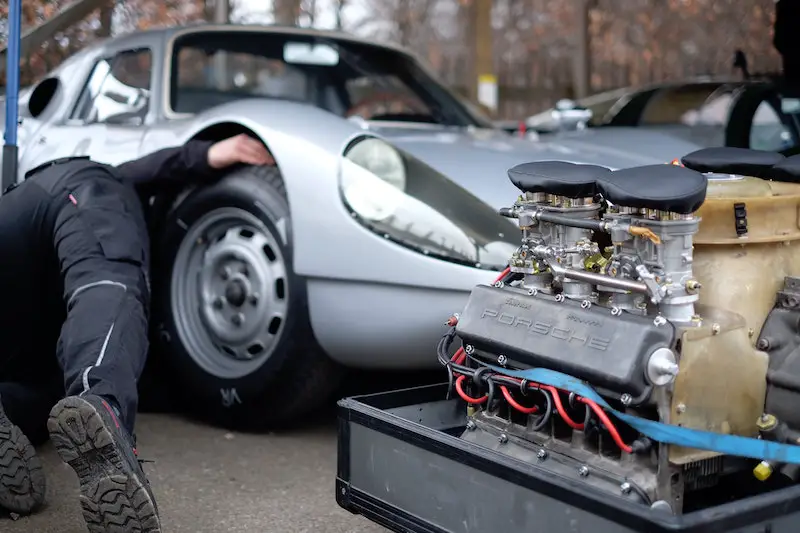
It’s important to properly maintain your car, truck, or other vehicle. There is both preventive and ongoing maintenance aspects that vehicle owners should follow. Taking advantage of these helpful car maintenance tips will help to extend the lifespan of your vehicle and keep maintenance costs down in the long run.
Regularly looking after your car and performing weekly maintenance inspections can help save you thousands of dollars. Not only that, you’ll avoid dealing with the stress of a serious car problem due to neglect or poor maintenance.
Regular inspections will allow you to identify areas that need your attention immediately and postpone anything that’s not a big deal. Replacing old or worn parts as necessary can prevent a major breakdown and enable you to catch any serious issues – saving you money and preventing stress.
The best way to keep your car going for as long and as affordably as possible is to start with preventative maintenance. Regularly scheduled maintenance is something you can almost always do on your own without having to rely on expensive, overpriced, and sometimes it’s shady mechanics.
Ignoring any of the basic car maintenance tips is going to cost you more money in the long run. The best strategy is to follow your vehicle’s owner’s manual and do all of the maintenance as it’s recommended. In this post, we’re going to take a look at an in-depth comprehensive car maintenance checklist so that your vehicle keeps operating at peak performance.
Jump Ahead To:
Common Maintenance Your Vehicle Needs: The Most Helpful Car Maintenance Tips
1. Check Tire Pressure Regularly
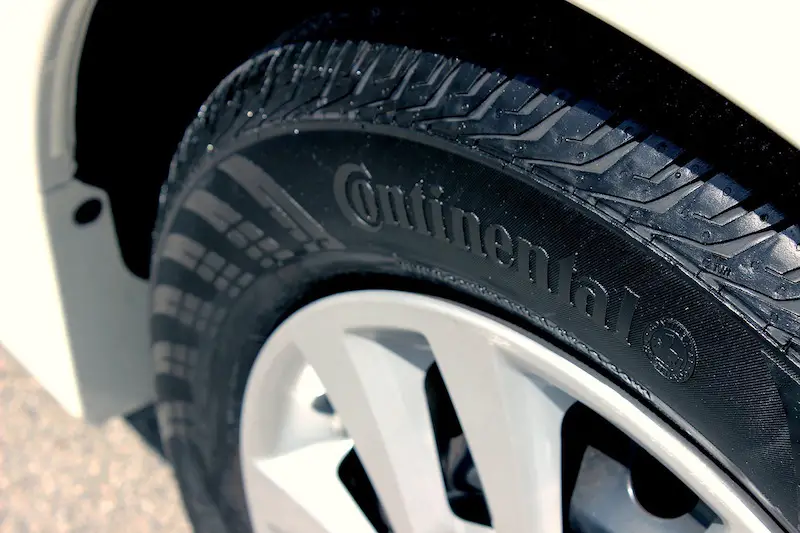
Tire pressure should be checked on a weekly basis. It’s a good idea to check it daily, but that’s likely a big hassle for most people. Instead, checking your tires every week is a good strategy when it comes to car maintenance.
Tire pressure isn’t something you want to ignore or delay. This is one of the most important components on your vehicle when it comes to safety, comfort, and fuel efficiency. You’ll save money by checking the tires regularly and avoid any potentially catastrophic issues further down the road.
Using a tire pressure gauge will give you the most accurate tire pressure reading. Refer to your owner’s manual for the specific pressure each tire should be. Use your own tire pump/air compressor, or visit your local gas station, to inflate the tires if necessary.
Additionally, wheel balance and regular tire rotation helps to give you a safer, more comfortable driving experience. It’s easy to rotate your tires at home following a strict schedule. When it comes to wheel balance, visit your local mechanic or tire shop and have them balance the tires as recommended in your owner’s manual.
2. Check Fluids Regularly
Right after tires, you’ll want to check the car fluids regularly as well. The important car fluids include the engine oil, windshield washer fluid, power steering fluid, and transmission fluid. These should be checked regularly to guarantee your vehicle is operating properly and efficiently.
Every week, when you check your tires, take the time to check your engine oil and windshield washer fluid. Power steering and transmission fluid should be checked on a monthly basis.
When checking these fluids, inspect the hoses and belts as well. Look for any wear and tear as well as anything that’s damaged, cracked, or broken. Fill up or replace any of the fluids or parts as necessary. This inspection alone can save you a lot of headaches in the future if performed regularly.
3. Check Your Air Filter
Next up on the car maintenance list is checking your air filter. Some of the main car problems are caused by clogged filters or loose fittings. It’s imperative that the air filter is properly maintained and replaced when necessary.
The air filter is designed to prevent dirt, debris, and other road particles from entering the engine. Engines need air to operate efficiently during combustion. Clogged or damaged air filters can have a detrimental impact on vehicle performance.
Always refer to your vehicle’s maintenance schedule for their recommendation on changing the air filter. Alternatively, it’s a good idea to change the filter every 12 months, or 12,000 miles, whichever comes first. Ignoring air filter maintenance doesn’t only lead to problems with the engine, it can cause dirty air to enter the car cabin.
There’s no need to bring your vehicle to the mechanic to change the filter. This is an easy aspect of car maintenance that you can do on your own in under 30 minutes depending on your skill level. Check the video above to see how to get it done.
4. Check the Car Battery
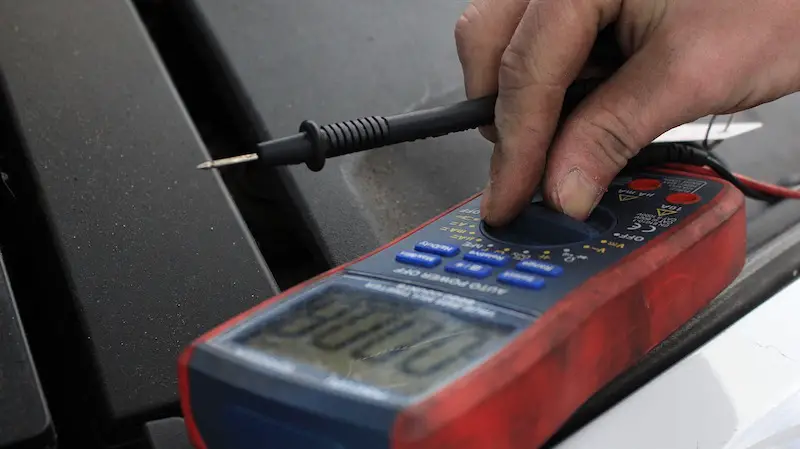
Another main cause of some of the biggest car maintenance problems is related to the car battery. Whether it’s a dead battery or one with low charge, it’s terrible getting into your car to find that it doesn’t start. Thankfully, this can be prevented in most cases by following a little bit of basic car maintenance relating to the battery.
To avoid dealing with issues like these, it’s a good idea to check your car battery regularly. Start by inspecting the cables and their connections for anything that’s damaged, cracked, or broken. Next, look for leakage or any mineral buildup around the terminals and cables.
If you find any damaged, cracked, or broken cables or connections, it’s important that they’re replaced immediately. Also, if you find any mineral build-up, clean the terminals and connections using a battery cleaning brush. Don’t forget to apply some dielectric grease to help prevent corrosion in the future.
Next up, you want to check the charge on the battery. Using a multimeter will give you an accurate reading on its voltage. Refer to the battery after taking a reading to make sure it’s holding the proper voltage. Replace the car battery if the voltage is low or if the battery is damaged in any way.
Finally, a low battery could be the result of the alternator. a quick way to check is by starting the engine then turning on the lights. Rev the engine – the lights shouldn’t dim or brighten. If they do, then there’s likely an issue with the alternator that you’ll want to have looked at.
5. Change the Spark Plugs
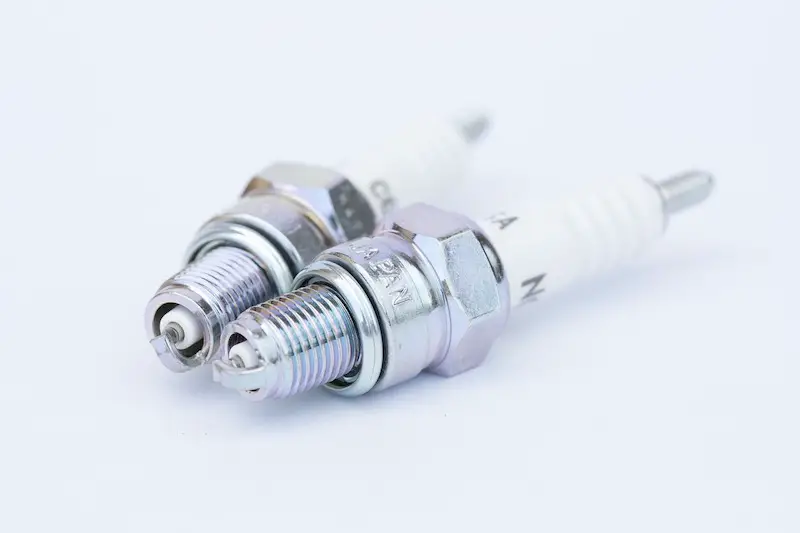
Changing the spark plugs regularly is recommended at certain intervals that can be found in your vehicle’s maintenance schedule. It’s a good idea to change the spark plugs if you’ve noticed that your car is not performing as it normally does. One of the reasons why your engine might not be working as efficiently can be due to the spark plugs.
Every few months, or about halfway through the recommended interval, check the spark plugs. They shouldn’t be worn out or covered in any buildup. It’s easy to remove the spark plugs on most vehicles and there are plenty of tutorials on YouTube for this process.
With the spark plugs removed, inspect their condition. Check the gap and look for any broken components. Worn out and dirty spark plugs should be replaced immediately. Your vehicle’s owner’s manual will have more information on spark plugs. This is something you can do in your driveway in less than 30 minutes, assuming you have the right tools.
6. Check the Brakes
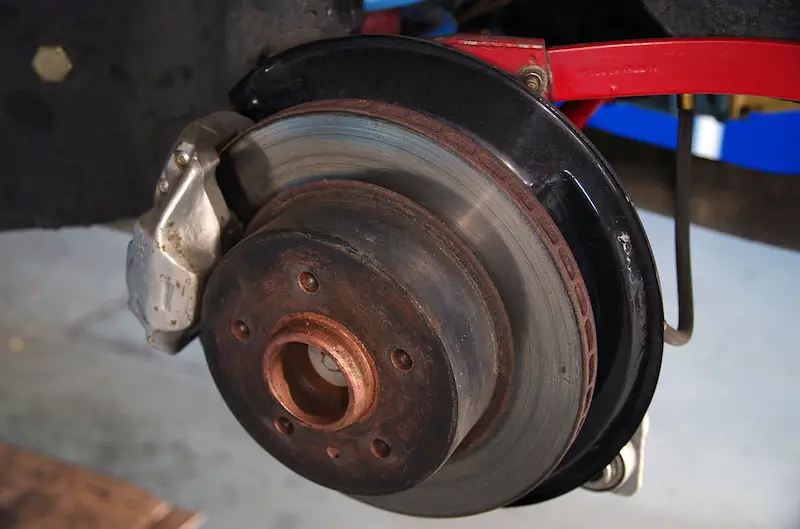
Replacing brakes can be an expensive mechanical process, especially if it needs to be done prematurely due to neglect. Brakes can also failed to work properly if neglected. This can lead to a dangerous situation when heavy braking power is needed.
Some of the most common issues when it comes to car brakes maintenance have to do with the rotors, brake pads, brake fluid, and sometimes the brake pedal. Typically, it’s going to be the brake pads or a brake fluid leak giving you the most problems.
Checking your brakes regularly, at least on a monthly basis, is a good idea. You should also inspect the brakes if you notice a lack in braking power. Start by inspecting the brake pads in checking the thickness on the pad itself. If it’s not up to spec, the brake pads will need to be replaced.
Next, check the brake fluid reservoir. Look underneath the vehicle after it has been parked for any leaking brake fluid. Should you notice any issues, they’ll need to be addressed immediately. When it comes to the brakes, it’s a good idea to let a professional or experienced mechanic work on the vehicle.
7. Replace Broken Lights and Turn Signal Bulbs
The headlights, brake lights, and signal bulbs on your vehicle are important for your safety and the safety of drivers around you. Driving at night with just one light is dangerous and illegal in many places. It’s also dangerous to drive with broken turn signals, as other drivers can’t predict what you’re doing.
Regularly inspect your headlights, taillights, brake lights, and signal bulbs. This is a good aspect of car maintenance to do once per month in your driveway. Check that the lights work on all settings, both front and back. Don’t forget to check the front and back turn signals, and that they’re working in both directions.
Replacing the lights and signal bulbs is an easy process for many vehicles. Parts are readily available online and you don’t need any intricate tools to switch the bulbs or lights. On some vehicles it can be difficult. In that case, bring your vehicle to your local mechanic for any replacement for broken light repair.
8. Have the Tires Balanced and Rotated Regularly
This aspect of basic car maintenance was mentioned in the section on tire pressure. It’s important enough that it needs its own section. Having your tires balanced and rotated regularly helps to prevent them from wearing unevenly. It will also help you extend the lifespan of the tires on your vehicle, saving you money in the long run.
It’s the best practice to rotate your tires every 6,000 to 8,000 miles. Tires don’t wear at the same amount. Rotating them, and having them balanced, ensures they last longer and gives you a better feeling while driving on the road.
Don’t forget to also have your tires checked for alignment. Tires that aren’t aligned can have a negative impact on steering and can cause uneven wear on specific parts of the tire. Every 6 months, have the alignment checked and the tires properly rotated and balanced if necessary.
9. Keep the Engine Clean
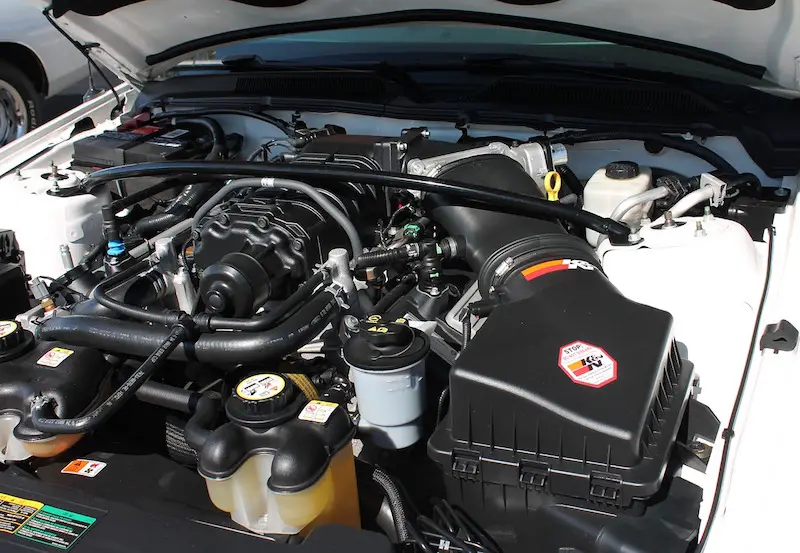
Your vehicle needs to be properly maintained inside and out for you to have the best driving and ownership experience. This includes the engine compartment. Dirty, greasy engine compartments are harder to work on and make it difficult to notice any problems at their beginning stages. You also don’t want any dirt or debris getting into the wrong place and damaging the engine.
Thankfully, keeping the engine clean is a simple and easy process. It’s possible to use special engine cleaners that are designed for exterior engine cleaning. Alternatively, some elbow grease while you’re washing the car goes a long way. Check out our post on the best car detailing kits if you’re looking for some helpful products and supplies for cleaning your car.
How can you clean engine is helpful for car maintenance and longevity. With a clean work space, it’s easier for you to discover leaks and any damaged, cracked, or broken components. You’ll also be able to better spot any damaged or missing electrical connections and read the necessary labels.
10. Clean the Windshield and Replace the Wipers
Dirty windshields are dangerous to drive with. They don’t provide you a clear, unobstructed view of the road. With a dirty, grimy windshield, you’re putting yourself at risk and you don’t need to be. Cleaning your windshield is a simple, quick process that should be done on a weekly basis.
It’s possible that dirt, road debris, and other particles can accumulate on the windshield. This can lead to be class getting scratched when you use the wipers. It’s also going to wear the wipers down more quickly, costing you more money in the long run.
Along with the windshield, the windshield wipers need to be maintained as well. Inspect them regularly to ensure that they’re not damaged, cracked, or broken in any way. It’s a good idea to replace the wipers once per year, especially if you’re driving regularly in a range of outdoor weather conditions. Damaged or broken wipers can scratch the glass on your windshield, which might require it to be replaced depending on the damage.
11. Inspect the Serpentine Belts (Replace When Necessary)
The serpentine belts in your vehicle or what help to keep all the engine components moving. They need to be regularly inspected for wear and tear and to ensure that they’re not damaged, cracked, or broken. Serpentine belt failure can critically damage the engine and result in a repair bill running into the thousands of dollars.
Those of you that bring your vehicle in for regular maintenance will likely have the mechanic inspect the belts semi-regularly. However, the maintenance schedule will let you know exactly when to inspect and replace the belt.
As a rule of thumb, it’s a good idea to check the belt every 50,000 to 60,000 miles and replace it when necessary. It’s always better to replace it prematurely, then deal with a damaged or broken belt in the future.
12. Check the Cooling System
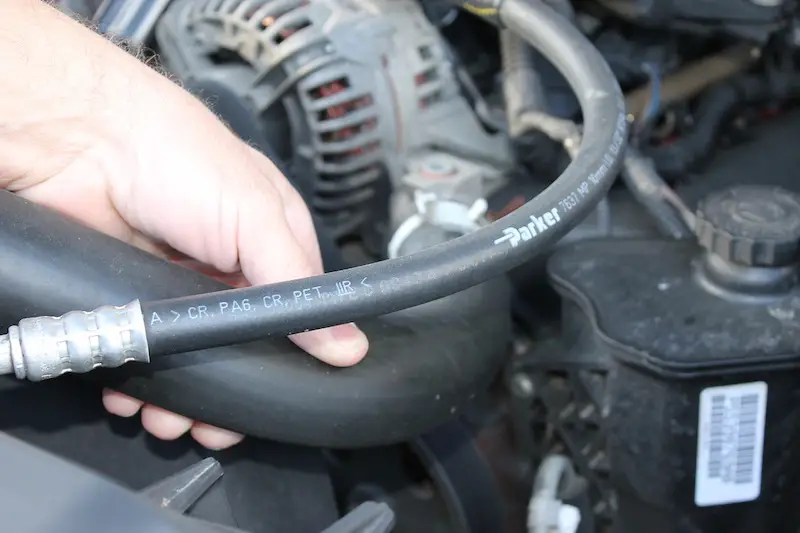
The cooling system in your vehicle works through a series of hoses. These are basic wear-and-tear components that can become damaged, cracked, or broken. It’s important to check these components regularly as they can deteriorate from age, heat, regular use, or high pressure.
It’s possible that your mechanic might check the coolant system components whenever you bring the vehicle in for service. However, that’s not always the case. It’s a good idea to inspect everything on your own to avoid any issues in the future.
For your inspection, start by looking at the coolant reservoir and checking that it’s at the correct level. If not, you’ll have to top it off or you may have a leak. As for the leak, look for residue of the coolant colour around the reservoir, hoses, and any connections. If there’s a leak, these components will need to be replaced immediately.
While you’re inspecting the hoses, check that they aren’t damaged, cracked, or broken. At the same time, check that the clamps are tightened and not damaged in any way. If they’re loose or damaged, replace them or tighten them as necessary.
The best way for your engine to efficiently cool itself is by having the right levels of coolant. Regularly checking the hoses helps to prevent leaks and keeps your engine running at the optimal temperature. Issues with the coolant system can lead to the engine overheating and other major, expensive problems you don’t want to deal with.
13. Carry Proper Automotive Tools at All Times
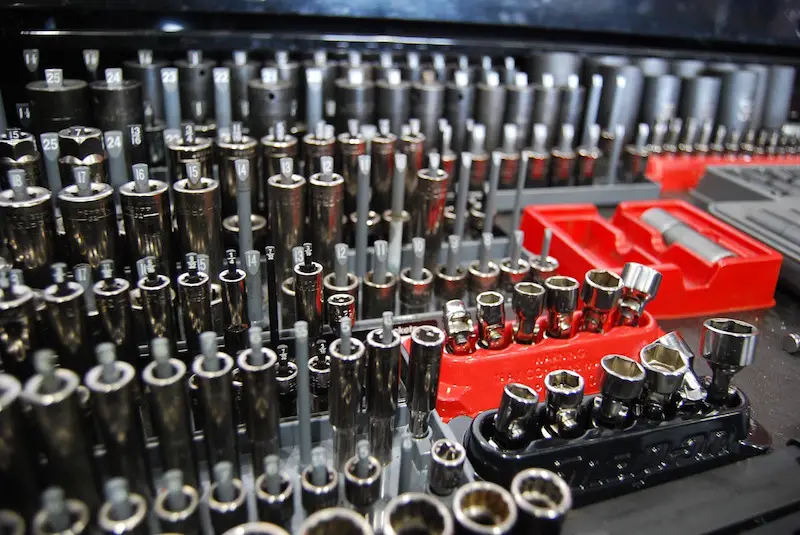
Even if you’re paying for an automotive service, like CAA or AAA, it’s smart to carry some basic car maintenance tools with you. These can be stashed in the trunk. it’s better to have them and not need them, than to not have them at all and get stranded.
Having a variety of different automotive tools will allow you to deal with any small issues while you’re on the road. For example, you could quickly fix a leak and drive to a garage or to your home for a more in-depth repair. In some cases, driving might not be an option, and you could be waiting a while for a tow unless you can do your own minor repairs.
You never know when having a small set of automotive tools will come in handy. You could also help other stranded drivers, depending on your skill set. Some helpful tools to keep in your vehicle might include a flashlight, wrench set, small tool kit, screwdrivers, fires, wire cutters, electrical tape, and thick gloves.
14. Cover Your Vehicle (When You’re Not Using It)
Covering your vehicle, especially if you’re going on vacation or not using it for an extended period, is a good idea. Some of the best car covers will protect your vehicle from harmful UV rays, tree sap, bird poop, and keep the interior in good condition. The weather elements, harsh UV rays, and general wear-and-tear can wreak havoc on the exterior of your vehicle.
Using a cover is smart if you want your car to look as good as possible for years to come. This is a great choice for those if you driving luxury cars, sports cars, and anyone without a garage. Using a protective sealant and washing your car regularly will also help to increase its lifespan when stored under a cover.
It’s understandable that this isn’t a solution for many drivers, especially if your vehicle is used or if you use it everyday for commuting. However, if you’re able to, keeping your vehicle covered is a good idea for maintenance and longevity.
15. Properly Maintain the Interior of Your Car
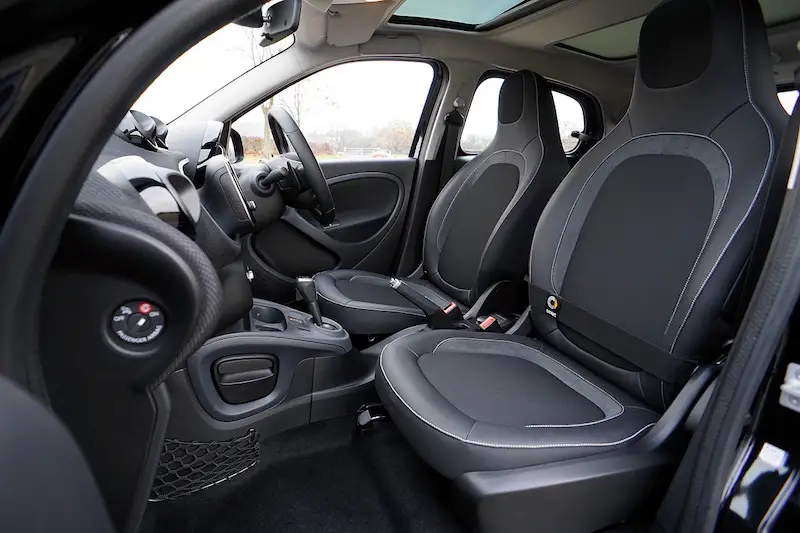
It’s not only the outside of your car and the engine bay that’s important. Properly maintaining the interior of your car provide you with a better driving experience. It also helps to increase the lifespan of the Interior components, seats, and dashboard.
Many people spend a lot of time in their vehicle. If you’re someone that drives a lot, having a clean, well-maintained interior can help to reduce stress and make it more comfortable for you to drive. Regularly cleaning the inside of your car is a good idea for your well-being as well as preventive maintenance.
The best way to keep the interior of your car clean is by setting a cleaning schedule and sticking to it. Once or twice a month, use the best car vacuum you have and other cleaning tools to clean the inside of your vehicle.
Try to not let any trash accumulate and regularly shake out the formats. You can even use a steering wheel cover to help extend the lifespan of your steering wheel, while keeping it cleaner and providing you a better grip.
While cleaning the interior of your vehicle, inspect all of the components you come in contact with. Look for anything that’s damaged, cracked, or broken. Replace any components or parts as necessary.
16. Improve Your Driving Skills and Habits
How you drive your vehicle on the road can have an impact on the condition of your car. Aggressive driving, quick braking, sharp turns, hard shifting, and hitting bumps at high speeds, will put more pressure on all of the vehicle components. This leads to accelerated wear and tear, costing you more money for vehicle maintenance.
Driving safely and efficiently is less stressful, helps you save money, and results in a better driving experience. Avoid jack rabbit starts from stop lights and stop signs. Consider using cruise control when you’re travelling on the highway or for extended distances. Slow down for sharp turns and shift gears at the appropriate RPMs.
Making the effort to improve your driving skills will turn you into a better, safer driver. Many people get into accidents or have issues with their vehicle simply due to their habits and the way they drive. Taking pride in your driving skills will help increase your vehicle’s life span and give you something to be proud of.
17. Follow the Vehicle’s Maintenance Schedule
One of the best car maintenance tips overall is to follow the maintenance schedule of your vehicle. Every owner’s manual contains a maintenance schedule that details the required maintenance and time frames for every specific vehicle. Following this schedule is like a cheat code when it comes to car maintenance and vehicle longevity.
Everything related to your vehicle is covered in the maintenance schedule. For example, the schedule will tell you when to check the tires, went to replace the spark plugs, went to check the brakes, went to check the coolant levels, when to replace the belts, everything. It’s hard to go wrong following the maintenance schedule, something which a lot of people avoid.
By following this maintenance schedule, there’s no reason why you can’t get hundreds of thousands of miles out of your vehicle. Yes, there are catastrophic issues and problems you might experience that are out of your control, but for the most part the maintenance schedule helps you to avoid any serious problems. When in doubt, refer to your vehicles owner’s manual and maintenance schedule for the best long-term car maintenance strategy.
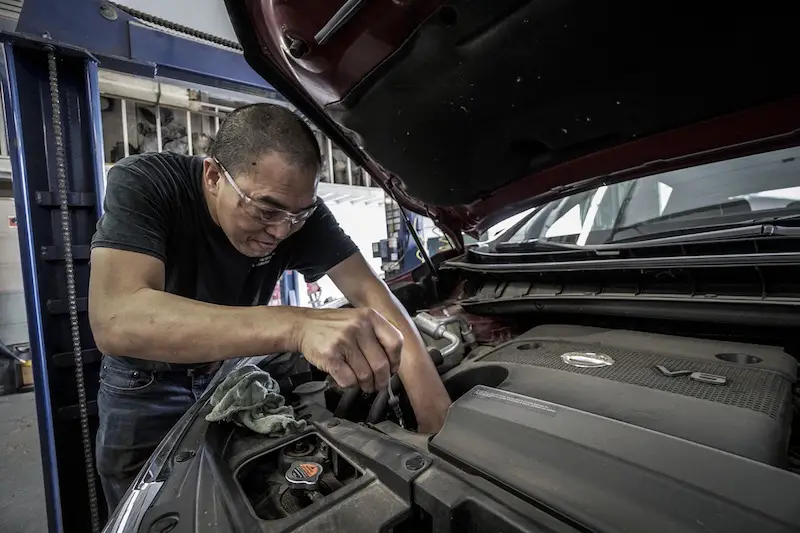

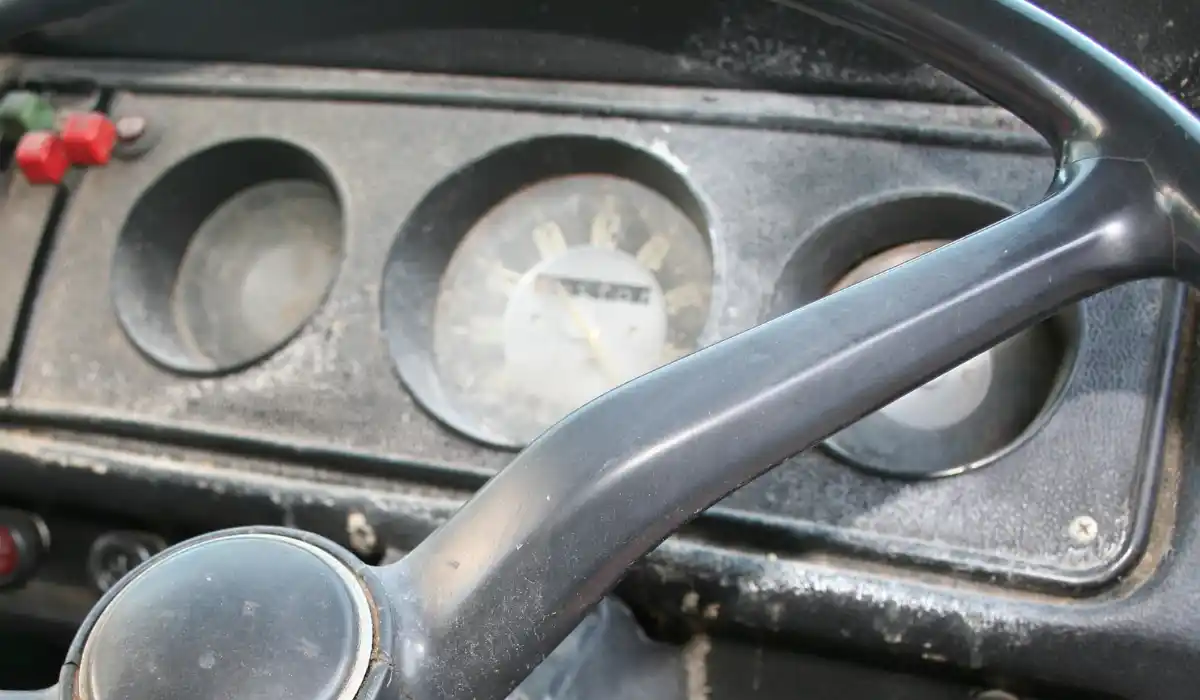

Leave a Reply